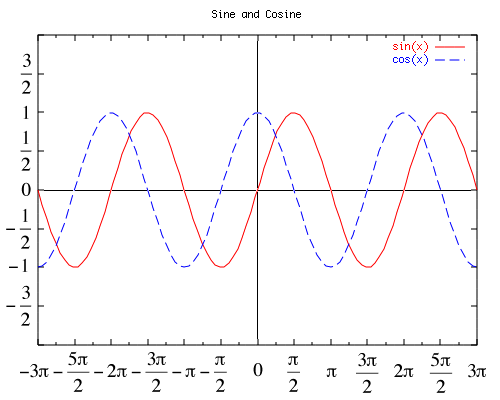Sine wave
|
|
A sine wave or sinusoid is a waveform whose graph is identical to the generalized sine function
- y = Asin[ω(x − α)] + C
where A is the amplitude, ω is the angular frequency (2π/P where P is the wavelength), α is the phase shift, and C is the vertical offset.
This wave pattern occurs often in nature, including in ocean waves, sound waves, and light waves.
A cosine wave is also said to be sinusoidal, since it has the same shape but is shifted slightly behind the sine wave on the horizontal axis: <math>\cos{(x -\frac{\pi}{2})} = \sin{x}<math>
Any wave shape, such as square waves or even the irregular sounds waves made by human speech, is actually a collection of sinusoidal waves of different periods and frequencies blended together. The technique of transforming a complex waveform into its sinusoidal components is called Fourier analysis.
The human ear can recognize single sine waves because they sound "clean" or "clear" to us; some sounds that approximate a pure sine wave are whistling, a crystal glass set to vibrate by running a wet finger around its rim, and the sound made by a tuning fork.
To the human ear, a sound that is made up of more than one sine wave will either sound "noisy" or will have detectable harmonics.

